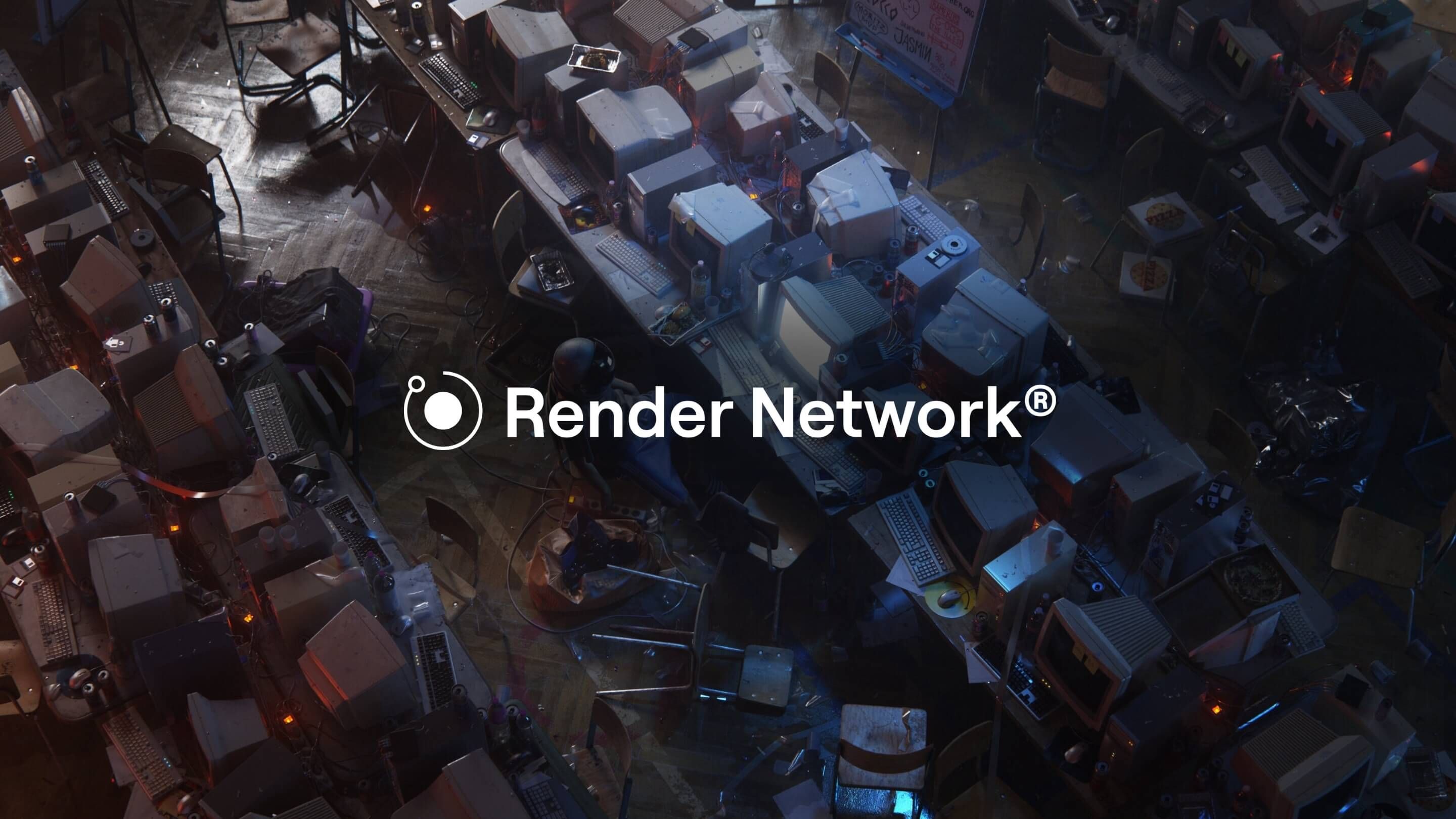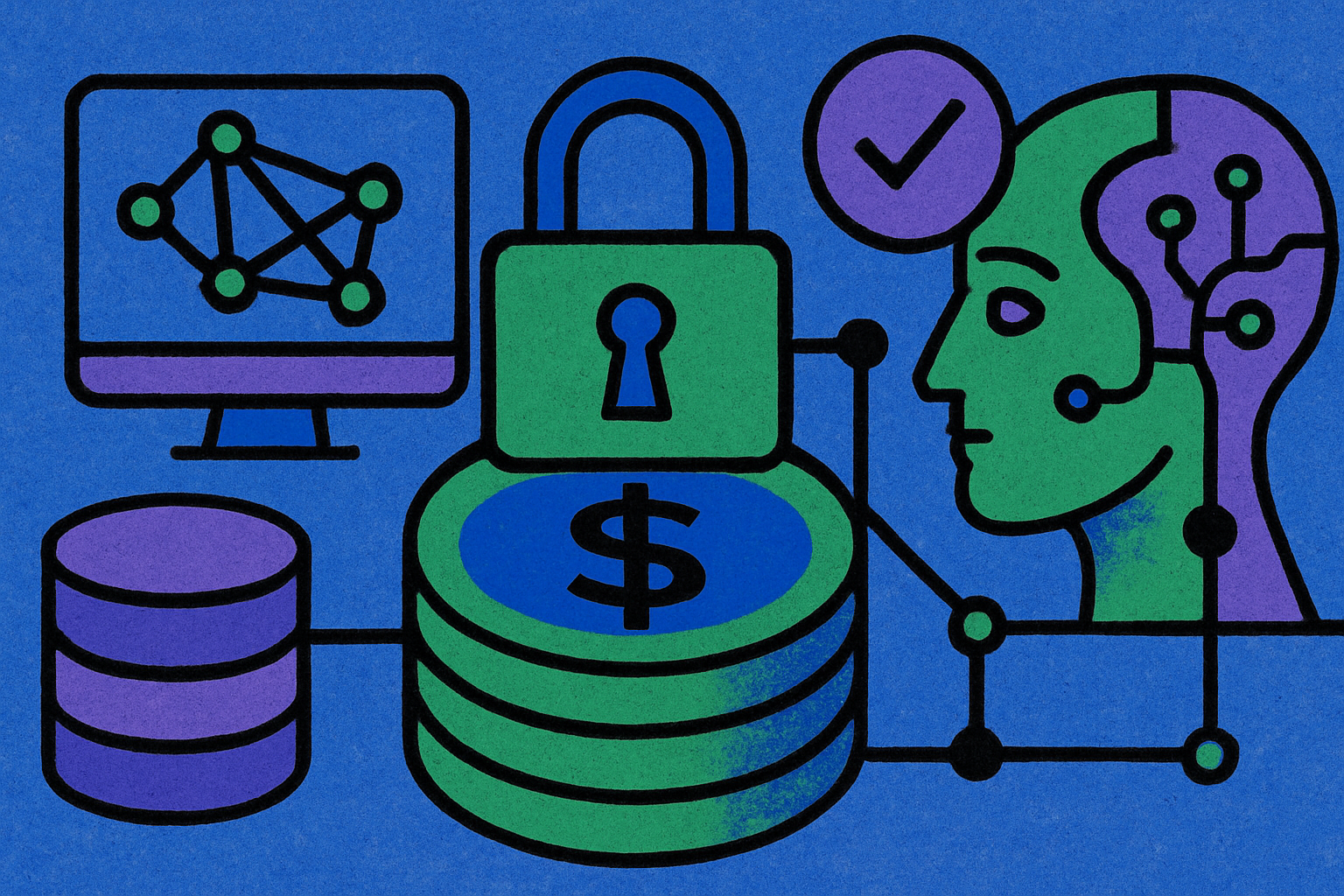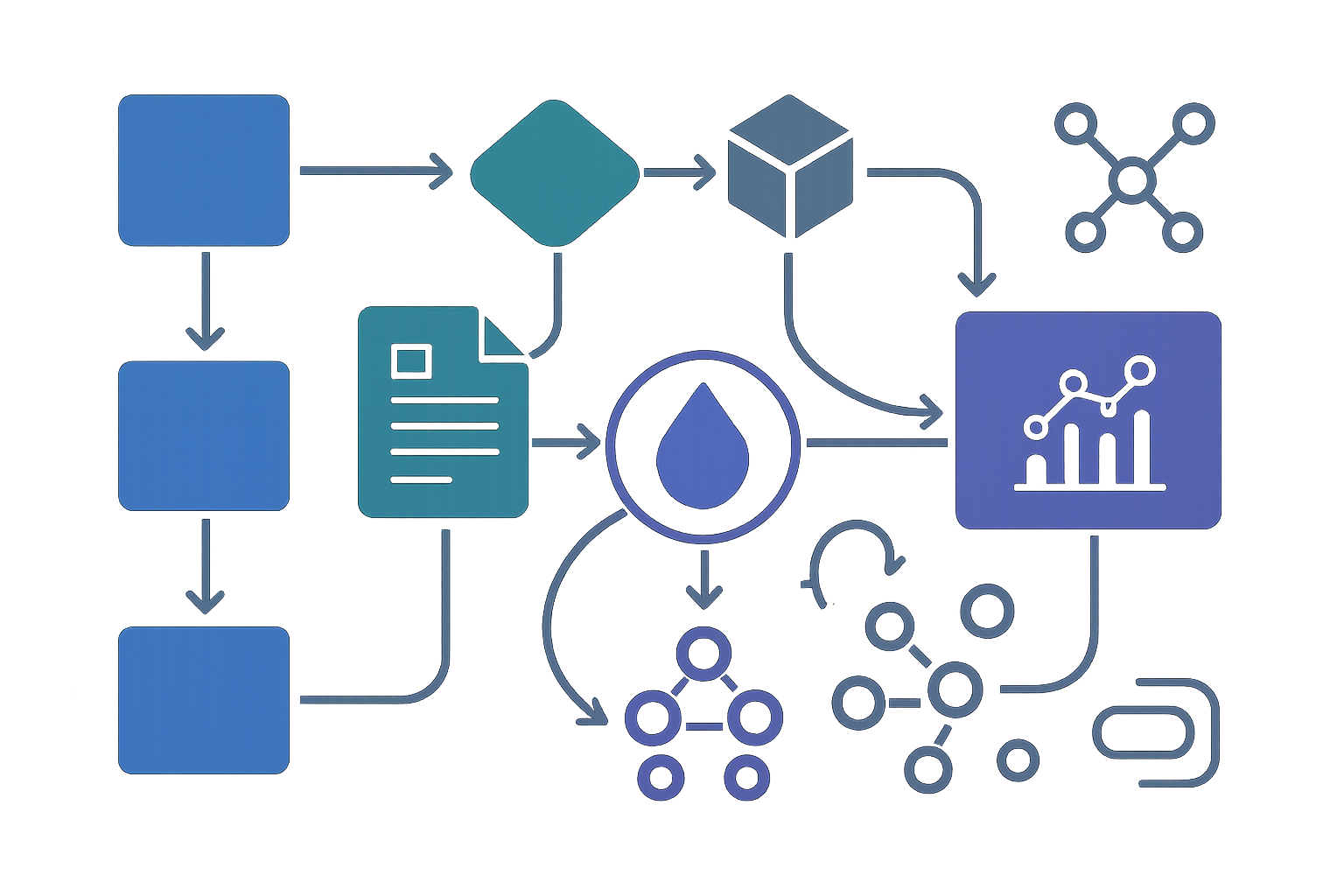
In 2025, the DePIN (Decentralized Physical Infrastructure Network) revolution is in full swing, unleashing a new era for AI compute. By leveraging globally distributed resources and blockchain incentives, DePIN networks are transforming how real-world AI applications are built, scaled, and democratized. This shift isn’t just technical, it’s economic and social, too. Developers and enterprises now tap into permissionless GPU power, robust decentralized storage, and verifiable data streams to fuel everything from autonomous agents to next-gen healthcare models.
DePIN: The Backbone of Decentralized AI Compute
Let’s get specific: The top five DePIN projects powering this movement in 2025 are Bittensor, Render Network, Akash Network, Filecoin, and iExec. Each brings unique strengths to the table, together, they’re reshaping the very fabric of AI infrastructure.
Top 5 DePIN Projects Powering Decentralized AI in 2025
-

Bittensor is a decentralized, blockchain-based protocol that incentivizes machine learning and AI model sharing. By enabling open, permissionless access to AI compute and data, Bittensor empowers developers to train and deploy models collaboratively while earning rewards for valuable contributions.
-

Render Network specializes in decentralized GPU rendering, connecting users needing high-performance compute for AI, film, and AR/VR with providers of idle GPU resources. In 2025, Render is a leader in powering scalable AI workloads through its robust DePIN infrastructure.
-

Akash Network offers a decentralized cloud marketplace for compute resources, allowing AI developers to deploy workloads on a distributed network of providers. Akash enables cost-effective, scalable AI compute with transparent pricing and open access.
-

Filecoin delivers decentralized storage solutions, crucial for AI applications that require secure, distributed data access. By leveraging a global network of storage providers, Filecoin ensures reliable, censorship-resistant data availability for training and deploying AI models.
-

iExec is a leading decentralized cloud computing platform that enables the secure and scalable execution of AI workloads. iExec’s marketplace allows users to monetize unused computing power and access trusted off-chain computation for real-world AI applications.
Bittensor is at the forefront with its open-source protocol for decentralized machine learning. By rewarding contributors with TAO tokens for sharing high-quality models and compute power, Bittensor is building a truly permissionless AI agent economy infrastructure. Its peer-to-peer network lets anyone train or run neural networks without relying on centralized tech giants, a game-changer for both innovation and censorship resistance.
Render Network (RNDR) has become synonymous with decentralized GPU rendering. In 2025, it’s not just about film or AR/VR anymore, AI workloads now dominate its network. Render connects users needing high-performance compute with providers offering idle GPU capacity worldwide. This model slashes costs while letting artists, researchers, and startups access resources previously reserved for deep-pocketed enterprises. If you want a deep dive into how decentralized GPU networks like Render are powering scalable AI inference today, check out this analysis.
Pioneering Real-World Applications With Crypto-Powered Compute
The magic of DePIN isn’t limited to raw hardware, it’s about unlocking new real-world use cases through crypto-powered coordination. Here’s how the rest of our leading five are making waves:
- Akash Network: As a decentralized cloud marketplace, Akash allows developers to deploy containerized applications, including large-scale AI models, at a fraction of traditional cloud costs. Its permissionless approach means anyone can provide or consume compute resources using AKT tokens.
- Filecoin: Decentralized storage is critical for massive datasets fueling today’s generative models. Filecoin incentivizes global storage providers to offer secure space on demand, ensuring that data pipelines for AI training remain resilient and censorship-resistant.
- iExec: By combining confidential computing with off-chain computation marketplaces, iExec enables privacy-preserving AI workloads across industries like healthcare and finance, where trustless execution is non-negotiable.
This isn’t just theoretical hype, the numbers prove it! For example, Helium’s HNT price currently sits at $2.33, highlighting ongoing demand for decentralized wireless infrastructure as a backbone for real-time AI data transmission.
The Competitive Edge: Cost Efficiency and Scalability in 2025
The benefits of these networks aren’t subtle:
- Dramatic cost reductions: Decentralized GPU networks can slash AI inference costs by as much as 70% compared to legacy cloud monopolies.
- Natively scalable workloads: Need more power? Just tap into more nodes, no need for capital-intensive hardware investments or complex contracts.
- No single point of failure: Distributed architectures mean higher uptime and resilience against outages or censorship attempts.
- Ecosystem inclusivity: Anyone, from solo developers to Fortune 500s, can participate in building tomorrow’s intelligent systems.
The rise of DePIN marks the end of centralized gatekeeping in AI infrastructure, and that means more innovation at every level!
Bittensor Technical Analysis Chart
Analysis by Maya Ellison | Symbol: BINANCE:TAOUSDT | Interval: 4h | Drawings: 6
Technical Analysis Summary
Draw a dominant downtrend line from the November peak (above $520) through successive lower highs to the current price near $312.8. Mark horizontal support at $310 and $300, and resistance at $340 and $380. Highlight the descending channel from late October to mid-November. Use rectangles to illustrate the consolidation range in early September (~$310-$340) and the distribution zone post-peak ($420-$520 in early November). Place arrows to indicate momentum breakdowns at each failed attempt to reclaim $340 and $380. Annotate a potential reversal zone if price stabilizes above $310, but indicate a further breakdown risk if $300 fails.
Risk Assessment: high
Analysis: TAO is in a steep downtrend with aggressive momentum selling into key support. Strong narrative tailwinds for DePIN, but technicals rule for short-term trades. High volatility expected.
Maya Ellison’s Recommendation: Aggressive traders can attempt bounces at $310/$300 with tight stops. Do not average down if $300 fails. Wait for clear reversal structure and volume confirmation before sizing up. Momentum is brutal both ways—respect the trend, trade fast, and protect capital.
Key Support & Resistance Levels
📈 Support Levels:
-
$310 – Near-term horizontal support; matches prior consolidation base
strong -
$300 – Psychological and structural support; below this, further downside likely
moderate
📉 Resistance Levels:
-
$340 – First major resistance above; marked by multiple failed recoveries
moderate -
$380 – Higher resistance from prior range; upside momentum likely above here
moderate
Trading Zones (high risk tolerance)
🎯 Entry Zones:
-
$312 – Aggressive bounce setup if price shows reversal signals above strong support
high risk -
$300 – High-risk, high-reward knife catch if capitulation flushes below support
high risk
🚪 Exit Zones:
-
$340 – First take-profit on mean reversion rally
💰 profit target -
$380 – Second take-profit if momentum returns
💰 profit target -
$295 – Hard stop if support fails; minimize further downside exposure
🛡️ stop loss
Technical Indicators Analysis
📊 Volume Analysis:
Pattern: N/A in image, but expect spike during recent breakdowns. Mark anticipated volume surges at support tests.
Watch for high volume on breakdowns or reversal attempts at $310 and $300 for confirmation.
📈 MACD Analysis:
Signal: Likely bearish based on price structure; watch for bullish cross as early reversal signal.
MACD is likely deeply negative; aggressive traders should watch for first bullish cross on lower timeframes.
Applied TradingView Drawing Utilities
This chart analysis utilizes the following professional drawing tools:
Disclaimer: This technical analysis by Maya Ellison is for educational purposes only and should not be considered as financial advice.
Trading involves risk, and you should always do your own research before making investment decisions.
Past performance does not guarantee future results. The analysis reflects the author’s personal methodology and risk tolerance (high).
6-Month Price Comparison of Leading DePIN & AI Compute Cryptocurrencies (as of 2025-11-16)
Performance of Bittensor, Render Network, Akash Network, Filecoin, and iExec compared to Bitcoin and Ethereum over the past 6 months, using real-time market data.
| Asset | Current Price | 6 Months Ago | Price Change |
|---|---|---|---|
| Bittensor (TAO) | $313.82 | $343.79 | -8.7% |
| Render Network (RNDR) | $2.00 | $2.46 | -18.7% |
| Akash Network (AKT) | $0.5470 | $1.14 | -52.0% |
| Filecoin (FIL) | $1.91 | $1.56 | +22.4% |
| iExec (RLC) | $0.7628 | $0.7800 | -2.2% |
| Bitcoin (BTC) | $93,434.00 | $60,000.00 | +55.7% |
| Ethereum (ETH) | $3,071.10 | $2,500.00 | +22.8% |
Analysis Summary
Over the past 6 months, major DePIN and AI compute tokens have shown mixed performance. While Bitcoin and Ethereum posted strong gains (+55.7% and +22.8% respectively), most DePIN-focused altcoins declined, with Akash Network experiencing the steepest drop (-52.0%). Filecoin was the only DePIN asset to record a positive change (+22.4%), while Bittensor, Render Network, and iExec saw moderate to significant declines.
Key Insights
- Bitcoin and Ethereum outperformed all listed DePIN assets over the past 6 months.
- Filecoin (FIL) was the only DePIN project in this comparison to post a positive 6-month return (+22.4%).
- Akash Network (AKT) experienced the largest decline among the group, losing over half its value (-52.0%).
- Bittensor (TAO) and Render Network (RNDR) both saw notable declines, at -8.7% and -18.7% respectively.
- iExec (RLC) was relatively stable, with only a minor decrease (-2.2%).
All prices and percentage changes are sourced directly from the provided real-time market data as of 2025-11-16. The 6-month price change is calculated based on the difference between the current price and the price 6 months ago for each asset.
Data Sources:
- Main Asset: CoinMarketCap
- Render Network: CoinGecko
- Akash Network: CoinMarketCap
- Filecoin: CoinGecko
- iExec: CoinGecko
- Bitcoin: CoinMarketCap
- Ethereum: CoinMarketCap
Disclaimer: Cryptocurrency prices are highly volatile and subject to market fluctuations. The data presented is for informational purposes only and should not be considered as investment advice. Always do your own research before making investment decisions.
DePIN Cryptocurrency Price Prediction Table (2026-2031)
Forecasts for Bittensor (TAO), Render Network (RNDR), Akash Network (AKT), Filecoin (FIL), and iExec (RLC) based on current market trends and DePIN sector growth.
| Year | Asset | Minimum Price | Average Price | Maximum Price | Year-over-Year % Change (Avg) | Scenario Insights |
|---|---|---|---|---|---|---|
| 2026 | TAO | $270.00 | $360.00 | $480.00 | +20% | AI/DePIN adoption accelerates, but volatility remains high. |
| 2026 | RNDR | $7.00 | $10.00 | $14.00 | +18% | GPU demand surges with AI/AR/VR expansion. |
| 2026 | AKT | $4.80 | $6.00 | $8.00 | +15% | Edge compute growth, but faces competition. |
| 2026 | FIL | $7.50 | $11.00 | $15.00 | +13% | Web3 storage demand rises, Filecoin remains a leader. |
| 2026 | RLC | $3.00 | $4.20 | $6.00 | +14% | Enterprise AI compute demand supports steady growth. |
| 2027 | TAO | $320.00 | $430.00 | $570.00 | +19% | DePIN/AI utility expands, regulatory clarity improves. |
| 2027 | RNDR | $8.50 | $12.00 | $16.50 | +20% | Wider adoption in creative and enterprise AI sectors. |
| 2027 | AKT | $5.50 | $7.20 | $9.50 | +20% | Hybrid cloud partnerships drive growth. |
| 2027 | FIL | $9.00 | $13.00 | $18.00 | +18% | Storage market share increases with decentralized apps. |
| 2027 | RLC | $3.70 | $5.10 | $7.20 | +21% | AI/decentralized compute adoption accelerates. |
| 2028 | TAO | $370.00 | $510.00 | $700.00 | +19% | Mainstream DePIN AI integration, strong developer growth. |
| 2028 | RNDR | $10.00 | $15.00 | $21.00 | +25% | AI rendering and metaverse use cases expand. |
| 2028 | AKT | $6.50 | $8.80 | $12.00 | +22% | Edge AI and IoT fuel demand. |
| 2028 | FIL | $11.00 | $16.50 | $23.00 | +27% | Web3 storage dominates new verticals. |
| 2028 | RLC | $4.50 | $6.40 | $9.00 | +25% | Enterprise AI and DePIN contracts multiply. |
| 2029 | TAO | $420.00 | $590.00 | $800.00 | +16% | Competition rises, but network effects persist. |
| 2029 | RNDR | $12.00 | $18.00 | $26.00 | +20% | Decentralized GPU becomes mainstream. |
| 2029 | AKT | $7.50 | $10.20 | $14.00 | +16% | Cross-chain compute adoption increases. |
| 2029 | FIL | $13.00 | $19.00 | $28.00 | +15% | Market consolidation, but demand remains strong. |
| 2029 | RLC | $5.20 | $7.40 | $10.50 | +16% | Steady enterprise growth, moderate competition. |
| 2030 | TAO | $480.00 | $670.00 | $920.00 | +14% | Matured DePIN/AI sector, stable growth. |
| 2030 | RNDR | $14.00 | $21.00 | $31.00 | +17% | AI/immersive tech drive GPU demand. |
| 2030 | AKT | $8.50 | $12.00 | $16.50 | +18% | Edge and cloud synergy, new partnerships. |
| 2030 | FIL | $15.00 | $22.00 | $33.00 | +16% | Web3 storage becomes industry standard. |
| 2030 | RLC | $6.10 | $8.60 | $12.50 | +16% | Broader AI/enterprise integration. |
| 2031 | TAO | $520.00 | $740.00 | $1,050.00 | +10% | Market matures, growth slows but remains positive. |
| 2031 | RNDR | $16.00 | $24.00 | $36.00 | +14% | GPU market matures, steady adoption. |
| 2031 | AKT | $9.30 | $13.50 | $19.00 | +13% | Global edge compute adoption. |
| 2031 | FIL | $16.50 | $24.00 | $36.00 | +9% | Continued dominance in decentralized storage. |
| 2031 | RLC | $6.80 | $9.50 | $14.00 | +10% | Stable enterprise contracts, moderate competition. |
Price Prediction Summary
Between 2026 and 2031, DePIN and decentralized AI compute tokens are projected to experience robust growth, driven by AI adoption, real-world utility, and increased enterprise demand. Bittensor (TAO) and Render Network (RNDR) are expected to lead in both price appreciation and volatility, while Filecoin (FIL), Akash Network (AKT), and iExec (RLC) offer steady, sustainable gains. Price ranges reflect both bullish technological breakthroughs and bearish regulatory or competitive pressures. Year-over-year growth rates are expected to moderate after 2029 as the sector matures.
Key Factors Affecting Bittensor Price
- Adoption of AI and real-world DePIN use cases across industries
- Regulatory clarity and global crypto policy developments
- Technological advancements in decentralized compute, storage, and data transmission
- Increased competition from new DePIN and Web3 infrastructure projects
- Macroeconomic conditions and institutional investment flows
- Integration with traditional enterprise and Web2 markets
- Network effects and ecosystem development for each token
Disclaimer: Cryptocurrency price predictions are speculative and based on current market analysis.
Actual prices may vary significantly due to market volatility, regulatory changes, and other factors.
Always do your own research before making investment decisions.
If you’re curious about the mechanics behind these cost savings or want a breakdown of how DePIN slashes traditional cloud expenses by up to 70%, don’t miss our feature on decentralized GPU economics here.
But the true impact of DePIN AI compute in 2025 goes beyond economics. These networks are actively enabling breakthroughs across healthcare, mobility, robotics, and even climate science. For instance, decentralized storage from Filecoin allows medical researchers to securely share massive imaging datasets with global collaborators, while Bittensor‘s permissionless AI model marketplace accelerates drug discovery by harnessing collective intelligence without risking data privacy leaks.
Akash Network is empowering robotics startups to deploy real-time AI control systems at the edge, bypassing the latency and cost bottlenecks of legacy cloud providers. Meanwhile, iExec‘s confidential computing tools are supporting fintech innovators who need to process sensitive transactions with both speed and zero trust assumptions. The diversity of use cases is exploding as more developers realize they can access high-performance infrastructure without asking anyone’s permission.
![]()
What Sets These DePIN Leaders Apart?
While dozens of projects are entering the DePIN race, this curated top five stands out by delivering:
- Robust crypto-powered incentives: Each project uses tokenomics to align resource providers and users for sustainable growth.
- Mainnet maturity: All five have live networks supporting real-world workloads at scale today, not vaporware or testnets.
- Ecosystem integrations: From cross-chain bridges to enterprise SDKs, these platforms play nicely with existing AI stacks and Web3 tooling.
- Pioneering community governance: Open participation ensures rapid evolution and resilience against centralized capture.
The result? A thriving landscape where developers can spin up GPU clusters on Render or Akash, store sensitive datasets on Filecoin with cryptographic guarantees, and deploy privacy-first inference jobs on iExec, all paid for seamlessly via crypto rails.
The Road Ahead: Where DePIN Meets the Future of AI
The convergence of decentralized GPU networks and permissionless compute is just beginning. In 2025 and beyond, expect to see:
- Bittensor’s agent economy fueling autonomous machine collaboration provides from smart vehicles negotiating traffic in real time to distributed swarms managing supply chains without human intervention.
- Render Network’s GPU liquidity underpinning generative media provides enabling creators worldwide to launch immersive experiences powered by open-source models instead of siloed corporate APIs.
- Ecosystem-wide composability provides a future where compute flows as freely as data across Filecoin’s storage backbone and iExec’s confidential enclaves.
If you want a front-row seat to this transformation, or if you’re ready to build, you’re in the right place. The DePIN movement isn’t just a new tech stack; it’s a new paradigm for how we harness intelligence at scale. As prices like Helium’s HNT hold steady at $2.33, it’s clear that demand for decentralized infrastructure is only accelerating.
The next wave of AI breakthroughs will be built not in walled gardens but on open networks where everyone can contribute, and benefit. Are you ready to join the builders reshaping tomorrow’s intelligent world?






